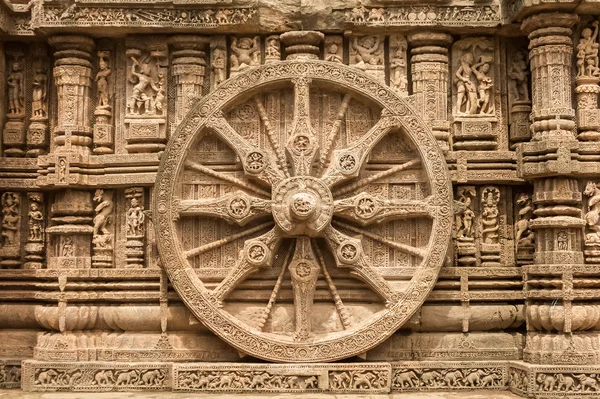
Let's examine Bengali attitudes towards Tantrism, during the period 1857 to 1947. Since, however, Tantric studies are still in their infancy, our topic has to be approached rather indirectly. Two anthropological concepts will be used as heuristic tools for the purpose.
The first one is David Parkin’s concept of “cultural debate”. He looks at culture as a system of communication, of live exchanges in ‘the long conversation between the generations’. This conversation is often likely to be about the values of the socio-cultural group or of some members of it, e.g. whether these values are threatened. By definition, a lot of the conversation called culture goes on within the group; and the threats to its values are often seen by the people in authority to arise from “the enemy or sinner within” From this angle, the threatening values are seen as conflicting with those that impose order and stand for continuity, by the people who are in authority and have vested interest in the status quo.
From another viewpoint, however, according to Parkin, “these opposed forces of emic order and disorder can be seen as attempts to turn the long conversation between the generations into an open debate, a debate that may invite participants from outside the culture”
It is this concept of “cultural debate” that provides us with a very fertile tool to study attitudes towards Tantrism.
The second conceptual tool is Bharati’s term “pizza effect”. It is related to the first, in that it represents an aspect of the external dimension of the “cultural debate” in question. According to Bharati, during the past one hundred years or so, Indians have often become interested in items of their culture, once these were appreciated by Western thinkers and scholars. Thus, yoga, Indian classical dance and other Indian cultural artifacts, which had been neglected by urban Hindus, became popular when they became well known in the West. This is similar to the way in which pizza, which was a simple bread in nineteenth-century Italy, became embellished with many additions in America, and the new dish became very popular back home in Italy.
I propose to use the above two conceptual tools in conjunction with a diachronic approach. I shall look first at the debate around Tantrism as it developed in India through the centuries, until we reach the period we are actually interested in, i.e. until 1857. This is necessary in order to appreciate the continuities in the debate, and thus to see how that debate changed during our period of focus.
Before we proceed further, a word about the time-frame of the topic would be in order. The year 1857 was the year of the Indian mutiny, which led the very next year to the direct rule over the East India Company’s Indian territories by the British Crown, and to all the influences which that rule set in motion. The year 1947 is the year of Indian independence from British rule.
The next thing to do is to recapitulate what we mean by Tantrism. We have already seen that Tantrism denotes a system of rituals, which are full of symbolism and are chiefly Shakta, and which are propagated along “schools” (sampradaya) and lines of succession (parampara) by spiritual adepts or gurus. Also it is sadhana, which utilizes kundalini-yoga and other psychosomatic experiences.
The Tantric sadhana is a purely individual path to release, accessible to all people, women as well as men (at least in theory), householders as well as ascetics. Its doctrinal aspect is summed up by Madeleine Biardeau as “an attempt to place ‘kama’, desire, in every meaning of the word, in the service of liberation, not to sacrifice this world for liberation’s sake, but to reinstate it, in varying ways, within the perspective of liberation.”
Some authors consider Bengal and Assam to have been the origin of Shakta and Tantric practices. At any rate, the Kamakhya temple in Assam and the Kalighat temple in Calcutta are among the most famous sacred places of Tantrism. A study of the religious geography of Tantrism would indicate that Shaktism and Hindu Tantrism were spread over the whole of India, and especially in the North-West, Kerala and the Bengal region. In fact, we have seen that according to Payne the greatest hold of Shakta worship has been in the Bengal region.
The “Debate” up to 1857
At the outset, let us recall that in the definition of Tantrism the left-handed practices are crucial: it is the performance of the “five m’s” that has given Tantrism its risque flavour, in the eyes of the orthodox.
At the same time, we have noted that Tantrism lies at the very “core” of the Hindu tradition. To take an example, almost all the temples in India have strong Tantric “elements” in their local traditions. Thus, in the daily worship of Jagannath in Puri, the right-handed version of the Tantric panchatattva is offered to the deity: the “fifth m” (viz. maithuna) is in the form of the dance of devadasis (until very recently) and the offering of aparajita flowers.
Tantrism thus straddles the great traditions-little traditions dichotomy. As Padoux puts it, “Despite (its) autochthonous and perhaps ‘popular’ roots . . . Tantrism cannot be considered a popular form of religion in contrast to a ‘higher’ non-Tantric Hinduism.” And, even in modem times, there are localized left-handed activities based on the Tantric texts, though most people who talk about them have never actually seen them performed.














Comments
Post a Comment
If you want more information, please let me know.